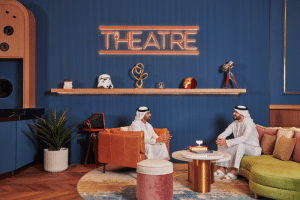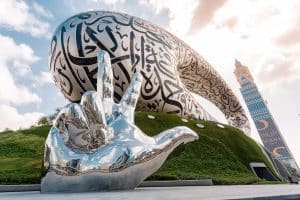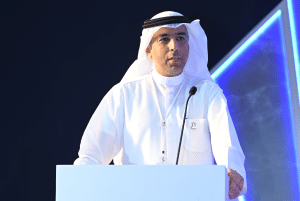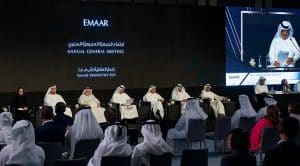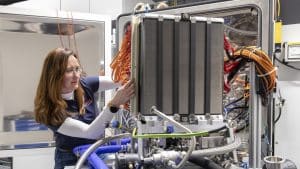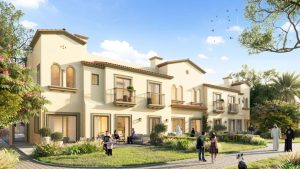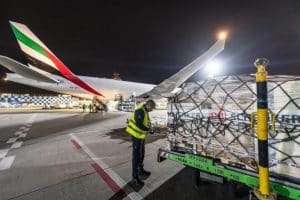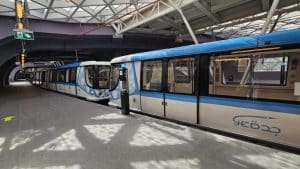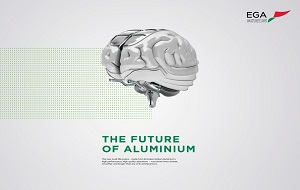
Spearheaded by companies like Emirate Global Aluminium, EGA, the Middle East’s aluminium industry has not only fulfilled forecasts made in late 2008 that it has the right fundamentals to survive and thrive, but also is entering a stage of strong expansion, both in primary production and downstream developments.
That was the strong message to conveyed during the 29th International Aluminium Conference, which took place in Abu Dhabi from 22nd to 24th September, and attracted more than 500 key industry decision-makers from around the world. The event was organised by Metal Bulletin and hosted by EGA, the jointly-owned aluminium conglomerate formed by Mubadala Development Corporation and Investment Corporation of Dubai by integrating their aluminium industry assets. EGA’s core operating assets are Dubai Aluminium and Emirates Aluminium Company.
The U.A.E.’s Minister of Energy, Suhail Mohamed Faraj Al Mazrouei, highlighted the importance of EGA and the greater aluminium sector to the local economy in his opening address on the first day of the event. “From the early days of our union, aluminium was identified as the metal of the future and the industry of the future. Today, aluminium stands as a flagship industry in our nation’s development and on-going diversification,” he said.
In his keynote address, EGA Managing Director and CEO, Abdulla Kalban, sketched the growth of the sector since the onset of the global economic crisis in 2008, highlighting its successes against the odds. Back then, the GCC had two smelters, DUBAL and Aluminium Bahrain, which produced 1.92 million tpa. Today there are six smelters in the GCC, with an annual production capacity of 5 million tpa, all operating at full capacity. A 2012 study found that the GCC smelters had the lowest conversion cost, business cost and economic cost per tonne of aluminium; as well as the lowest power costs per tonne of aluminium.
“The future of the Middle East aluminium industry remains bright. In the primary aluminum sector, further capacity expansions have been announced by four of the GCC smelters that will collectively add another 2.25 million tonnes to the region’s annual production capacity,” Kalban said. “The downstream aluminium industry is also expanding, thanks to strong progress in local infrastructure development, increasing demand in international markets and the pro-active development of aluminum clusters, The growth of both sectors heralds more job creation opportunities, which will contribute further to the social and economic development of the region.” Built on a 40-year legacy, EGA is already a major global player. With a hot metal production capacity of 2.4 million tpa, EGA is one of the five largest primary aluminium producers in the world. The company has a total casting capacity of almost 2.8 million tpa, and all production is pre-sold the prior year. Some 90 percent of annual production is exported, serving over 350 customers in almost 70 countries across the world. A strong reputation for high quality products and exemplary service standards ensures long-term customer loyalty.
“While the name might be new, EGA is built upon strong foundations,” Kalban added. “The business is backed by the sovereign funds of Abu Dhabi and Dubai. It is a true union of the Emirates to realise the vision of our leaders.” Yousuf Bastaki, EGA’s Senior Vice President – Major Projects, elaborated on EGA’s successes with a presentation on “Managing Growth” on the opening day of the event. The focus of his presentation was the construction and commissioning of EMAL – a massive undertaking that was completed in two phases. The finished EMAL complex comprises a 1.32 million tpa smelter (1,200 cells in three potlines); a 3,000 MW power station; raw materials storage silos; a large carbon plant; and casting facilities with a capacity of 1.5 million tpa. EMAL Phase I (756 cells in two potlines) was one of the world’s largest greenfield smelter developments; while EMAL Phase II (444 cells in a single potline) is the world’s longest potline, at 1.7 km.
As the event host, EGA showcased the company via an exhibition stand and welcomed delegates for a tour of EMAL. EGA also hosted a gala dinner for the conference delegates.
Source : WAM News Agency for United Arab Emirates

